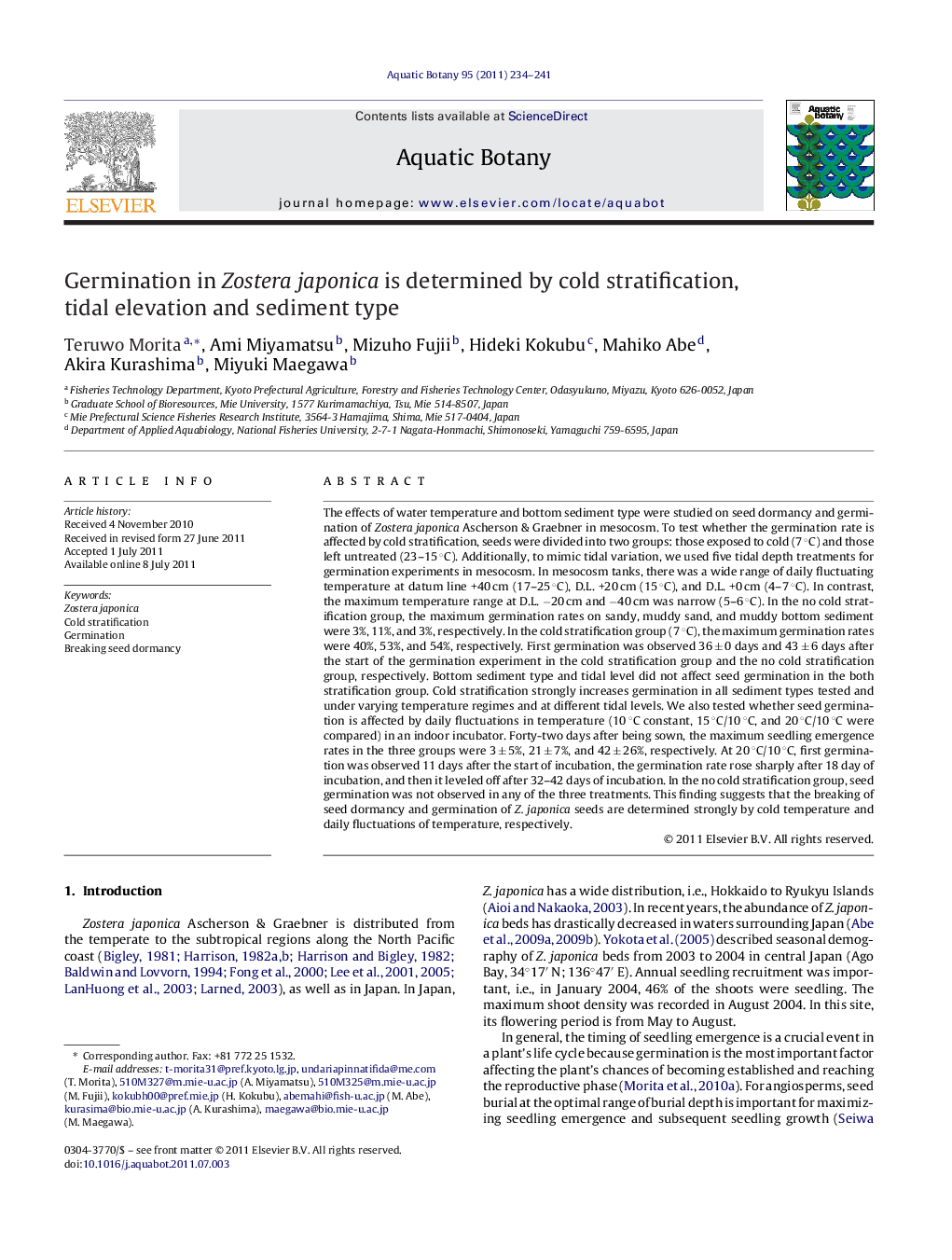| Article ID | Journal | Published Year | Pages | File Type |
|---|---|---|---|---|
| 4528106 | Aquatic Botany | 2011 | 8 Pages |
The effects of water temperature and bottom sediment type were studied on seed dormancy and germination of Zostera japonica Ascherson & Graebner in mesocosm. To test whether the germination rate is affected by cold stratification, seeds were divided into two groups: those exposed to cold (7 °C) and those left untreated (23–15 °C). Additionally, to mimic tidal variation, we used five tidal depth treatments for germination experiments in mesocosm. In mesocosm tanks, there was a wide range of daily fluctuating temperature at datum line +40 cm (17–25 °C), D.L. +20 cm (15 °C), and D.L. +0 cm (4–7 °C). In contrast, the maximum temperature range at D.L. −20 cm and −40 cm was narrow (5–6 °C). In the no cold stratification group, the maximum germination rates on sandy, muddy sand, and muddy bottom sediment were 3%, 11%, and 3%, respectively. In the cold stratification group (7 °C), the maximum germination rates were 40%, 53%, and 54%, respectively. First germination was observed 36 ± 0 days and 43 ± 6 days after the start of the germination experiment in the cold stratification group and the no cold stratification group, respectively. Bottom sediment type and tidal level did not affect seed germination in the both stratification group. Cold stratification strongly increases germination in all sediment types tested and under varying temperature regimes and at different tidal levels. We also tested whether seed germination is affected by daily fluctuations in temperature (10 °C constant, 15 °C/10 °C, and 20 °C/10 °C were compared) in an indoor incubator. Forty-two days after being sown, the maximum seedling emergence rates in the three groups were 3 ± 5%, 21 ± 7%, and 42 ± 26%, respectively. At 20 °C/10 °C, first germination was observed 11 days after the start of incubation, the germination rate rose sharply after 18 day of incubation, and then it leveled off after 32–42 days of incubation. In the no cold stratification group, seed germination was not observed in any of the three treatments. This finding suggests that the breaking of seed dormancy and germination of Z. japonica seeds are determined strongly by cold temperature and daily fluctuations of temperature, respectively.
Graphical abstract.Figure optionsDownload full-size imageDownload as PowerPoint slideHighlights• Cold stratification and temperature fluctuation, environmental factor for seed germination. • No relation between seed germination and sediment types. • At higher tidal level, seedling survival rate decreased. • Zostera japonica has an optimal tidal range for germination and seedling survival.
